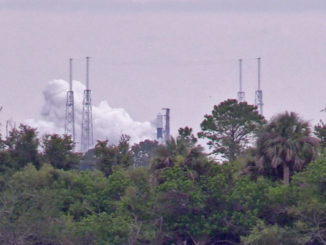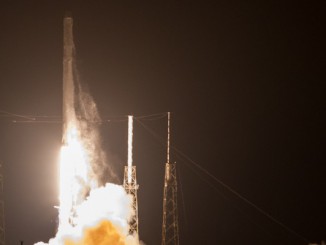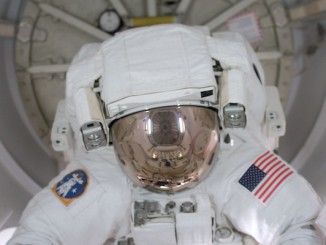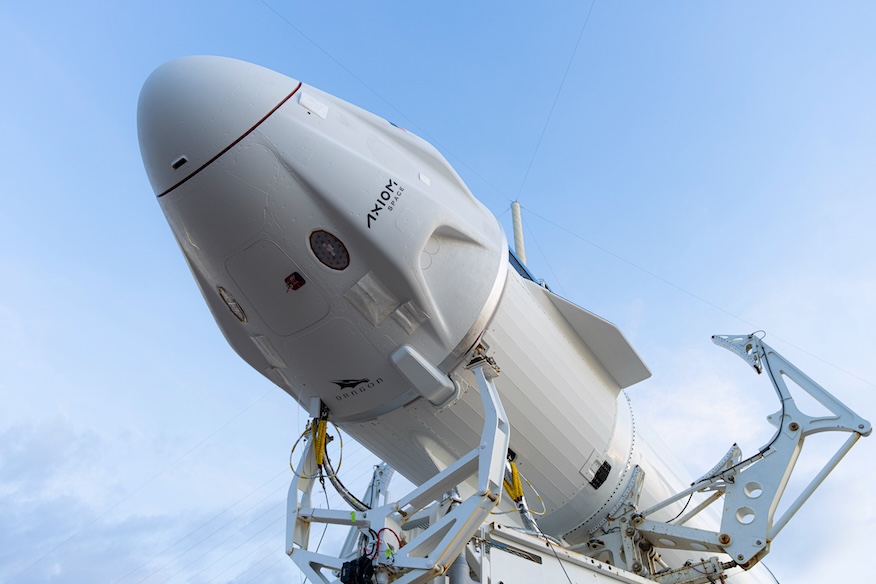
The forthcoming private astronaut mission to the International Space Station managed by Axiom Space is not only its fourth such flight, but it also marks the swan song for a key part of the manufacturing side of SpaceX’s business.
The mission, dubbed Axiom Mission 4 or Ax-4, features the debut of the Crew Dragon spacecraft, tail number C213. This has been billed by SpaceX as its fifth and final Dragon capsule.
“This is the first flight for this Dragon capsule and I can’t think of a better way for this capsule to enter the fleet than by flying this international crew,” said William Gerstenmaier, vice president of Build and Flight Reliability at SpaceX, during a post-launch readiness review teleconference on Monday.
Gerstenmaier said that this latest Dragon is an improvement upon previous designs and includes changes, like updated storage areas and improved propulsion systems “to make them more reliable and more reusable.”
“This isn’t just the same Dragon capsule we’ve been flying. We’ve actually made some improvements and actually made it better to continue to keep flying safely,” Gerstenmaier said.
SpaceX’s long-term goals are to shift its human spaceflight missions from Dragon to its Starship rocket, which it said will be capable of ferrying dozens of people into space.
Enter the (fifth) Dragon
The introduction of Dragon C213 comes years after the other four Crew Dragon spacecraft currently in service. The first of those was Endeavour, which debuted on the Demo-2 mission in 2020. It was followed later that year by Resilience on the Crew-1 mission.
After that came Endurance during the Crew-3 in November 2021 and most recently, Freedom with the launch of the Crew-4 flight to the ISS in April 2022. NASA and SpaceX certified the Dragon spacecraft for five launches and the current fleet is nearing that milestone:
- Endeavour – 5 (splashed down Oct. 25, 2025 with Crew-8 return)
- Resilience – 4 (splashed down April 4 following Fram2)
- Endurance – 4 (docked to the ISS as of June 10 for Crew-10)
- Freedom – 4 (under refurbishment to support Crew-11 NET July 2025)

NASA and SpaceX are looking at extending the flight capabilities of Dragon beyond the current five-flight limit. Back in 2023, Benji Reed, Senior Director of Human Spaceflight Programs at SpaceX, said the company was working with NASA to certify Dragon for up to 15 flights each.
The following year, in February 2024, Steve Stich, the Program Manager for NASA’s Commercial Crew Program, said that they were “in the middle of doing that work.”
“We’re in the middle of going through all those components. Some are actually approved for 15 flights, some we’re still in the middle of working on,” Stich said. “Some of those components had to go through some re-qualification to make sure that they can make it out to 15 flights. So, we’re in the middle doing that.”
During Monday’s teleconference, Dana Weigel, manager of the International Space Station Program for NASA, said the agency was still in the midst of certifying Dragon for more than five crewed missions.
“We’re going through a process of getting comfortable with a higher reuse beyond what we have today and so, the team is in the process of working through that,” Weigel said. “SpaceX does a great job with hardware tests so the great thing is, they have a lot of actual tests and performance data. Takes us a bit of time to go through that and make sure that we understand the data, but we are still working through that.
“I don’t have a specific schedule off the top of my head for you for timeline, but things are going well as we work through that.”
Originally, SpaceX was planning for Dragon C213 to enter service in 2024 in support of the Crew-9 mission to the space station. When production delays scuppered that plan, it was then set to fly the Crew-10 mission in early 2025.
NASA’s decision to bring back the crew of Boeing’s Starliner Crew Flight Test on a SpaceX Dragon spacecraft further pushed C213 into a place of prominence. It needed to carry Crew-10 to the ISS before Crew-9, now with NASA astronauts Butch Wilmore and Suni Williams as members, could depart on Dragon Freedom.
President Donald Trump added political heat to the fire when, in late January, he called for a faster return of the former Starliner crew and erroneously called for SpaceX Founder and political donor, Elon Musk, to “rescue” them.
NASA had previously established the return plan for Wilmore and Williams using Dragon back in August, prior the departure of the uncrewed Starliner spacecraft.
Teams also built our fifth and final Dragon crew spacecraft in Hawthorne, California. Next stop is Florida, where teams will prepare Dragon for its first mission to orbit! 🐉 pic.twitter.com/fElqzvmNvW
— SpaceX (@SpaceX) December 31, 2024
However, as it became clear that Dragon C213 would not be ready for launch in February — one of the original windows to launch the Crew-10 mission — NASA and SpaceX decided to switch to using Dragon Endurance, tail number C2010, which was being readied to fly the Ax-4 mission.
During a Crew-10 prelaunch briefing, Gerstenmaier, Vice President of Build and Flight Reliability at SpaceX, said that there was a battery issue with Dragon C213, which took extensive work to address.
“We ended up pulling the battery out. We understand now exactly the failure of the slice that occurred on that battery,” Gerstenmaier said in early March. “It turns out, the batteries are not easy to get out. It took a lot of capsule disassembly to get the battery out.”
In going through the final preparations for the Ax-4 mission, Sarah Walker, Director of Dragon Mission Management, said during a mission overview briefing some of the prelaunch checks raised a couple of issues that delayed the mission from May 29 to June 8.
“One was a wire harness we needed to swap out. It didn’t pass its standard preflight, it’s called a HIPOT test. It stands for high-potential and it’s a safety test that verifies the insulation strength of a device,” Walker explained. “And so, when a harness doesn’t pass this check, we have to replace it with a new harness and rerun the test. And so, that cost us a few days.”
Walker said teams also discovered some moisture in the bag used to pack the parachutes. That added a few days to the launch timeline “to ship the next set off the line out to Florida to install instead.”
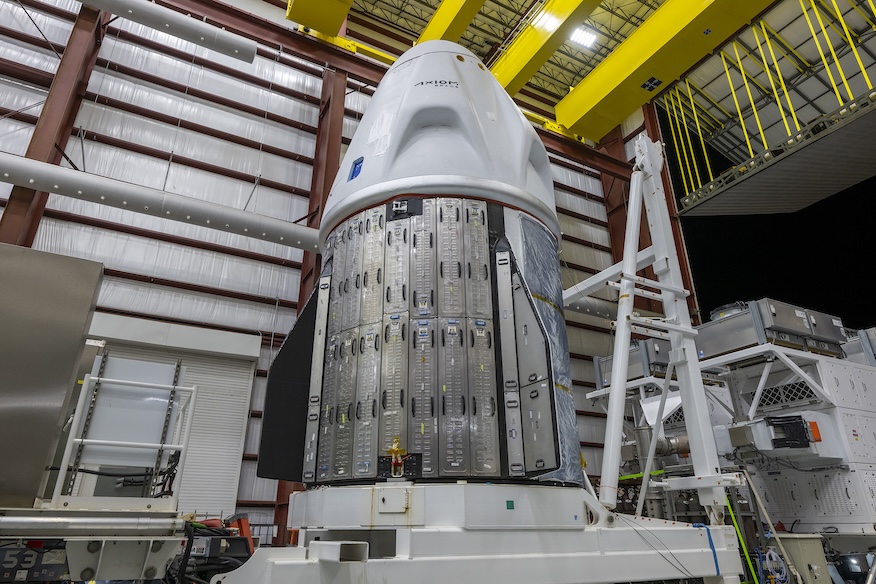
A busy year almost in the books
SpaceX has been increasingly busy with its Dragon missions, both for crew and cargo flights. 2025 will be the third year in a row that they’ve launched six Dragon missions.
While in previous years, those missions have been pretty evenly distributed throughout the calendar year, 2025 had a considerably ramped up cadence in the first half of the year.
“This year, the timing needs of our customers drove us to plan the exact same mission count, six mission, in less than half the time, just barely over five months, starting with the Crew-10 launch in March and concluding with a CRS-33 launch in August,” Walker said. “The team hasn’t missed a beat.”
She noted that the CRS-33 mission will include a more technically elaborate trunk for the Dragon spacecraft, since it will be used to boost the space station and prove out some capabilities that will be incorporated onto the ISS Deorbit Vehicle, commissioned by NASA to bring the space station out of orbit around the end of the decade.
“This is truly an unprecedented time in human spaceflight for my team and for the Dragon program at SpaceX,” Walker said. “I feel super grateful to have been a small part of it and I think what I’ve witnessed this year is seeing the team do what they do best, which is being thorough and methodical as they prepare for each and every launch and Axiom 4 is no different.”


